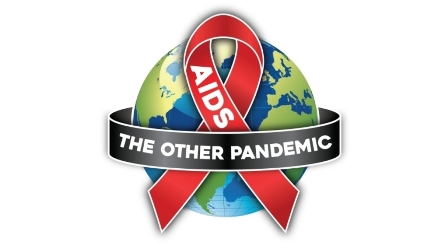As we continue our efforts to manage the devastating coronavirus pandemic, we cannot ignore the other public health challenges that our country faces.
For more than three decades, our country has been engaged in an ongoing struggle against HIV and AIDS, which has cost many lives and caused great hardship and suffering.
Tomorrow (today), we will join people across the globe in marking World AIDS Day. As the Chair of the South African National AIDS Council, Deputy President David Mabuza will lead the national commemoration with an address on progress in the country’s response.
This year, World AIDS Day is taking place under difficult conditions.
Since the outbreak of COVID-19 in the country, with the nation-wide lockdown and the pressure on our health facilities, many HIV, AIDS and tuberculosis services have suffered. This has posed a challenge for people testing and starting antiretroviral treatment. Many people found it difficult to collect their medicines and fewer people accessed other services, such as voluntary male medical circumcision.
At the same time, there are many lessons that have been learnt from our public health response to the coronavirus pandemic that can strengthen our fight against HIV and TB.
South Africa continues to have the largest number of people living with HIV in the world. It is encouraging, however, that over the last decade we made progress in reducing the number of new HIV infections in the population by nearly 60%.
It is also encouraging that HIV infections in adolescent girls and young women have significantly declined in the last decade. This is a crucial group because they are much more likely to be at risk of getting HIV.
Our treatment programme has contributed to a reduction in the number of deaths due to AIDS by 60%. There has been a greater reduction in HIV-related deaths among young people.
It was possible to reduce the number of deaths because we, together with our partners, have rolled out an extensive antiretroviral programme reaching millions of people living with the disease.
At the beginning of the decade, our programme to prevent mother to child transmission (PMTCT) of HIV had very low coverage. Now we have one of the highest rates of coverage of PMTCT in Southern Africa, which has substantially reduced rates of infection among children.
While we have reduced deaths and new infections, we still are far from reaching the goal we committed ourselves in 2016 of achieving a 75% reduction in HIV infections by 2020. If we succeed in doing so, we are likely to end AIDS as a public health threat by 2030.
Unfortunately, we are not there yet. We have to do far more to ensure that young people are empowered to prevent infections, including through changing behaviour, accessing condoms and testing regularly. We need to make sure that everyone who is infected has access to treatment and care.
We need to work harder on HIV prevention among key populations, including sex workers, men who have sex with men, and people who inject drugs. We must end the stigma and discrimination towards these populations. We cannot hope to end HIV if we ignore the needs, concerns and rights of any part of our population.
South Africa needs to increase efforts to medically circumcise young men to reduce their risk of acquiring HIV. Unsafe circumcision should not leave young men with lifelong health problems, and no one should die from circumcision. We must make sure that young men have safe circumcision.
We are encouraged by findings of a recent study on pre-exposure prophylaxis (PrEP). Unlike antiretroviral treatment that is given to people who are HIV positive, PrEP involves the regular use of antiretroviral drugs by HIV negative people to prevention infection. The study, conducted by scientists from the HIV Prevention Trials Network, found that long-acting injections once every eight weeks was better than the daily tablet used for HIV prevention. These findings have the potential to significantly strengthen our response to the epidemic.
If we are to succeed in ending AIDS as a public health threat within the next decade, we need to combine these medical breakthroughs with fundamental changes in behaviour. We also need to tackle the economic and social conditions that contribute to high rates of infection.
One of our central tasks is to empower adolescent girls and young women, educationally, economically and socially. They need to be able to make their own decisions about every aspect of their lives, including their sexuality and sexual behaviour.
As the country marks 16 Days of Activism for No Violence Against Women and Children, we need to work even harder to address the unequal relations between men and women – which contribute both to gender-based violence and to the spread of HIV.
Ultimately, we will achieve the end of AIDS through the empowerment of young people, women and other people at risk. This includes empowerment through access to information, advice and support. It includes access to education and economic opportunities, especially for young women. Empowerment also means that every person must have access to testing, treatment and other health services.
The people of South Africa have come so far, endured so much and made such great progress in the fight against HIV, AIDS and Tuberculosis.
On this World AIDS Day, which is taking place in the shadow of another devastating pandemic, let us intensify both our resolve and our actions to confront and overcome AIDS once and for all.

